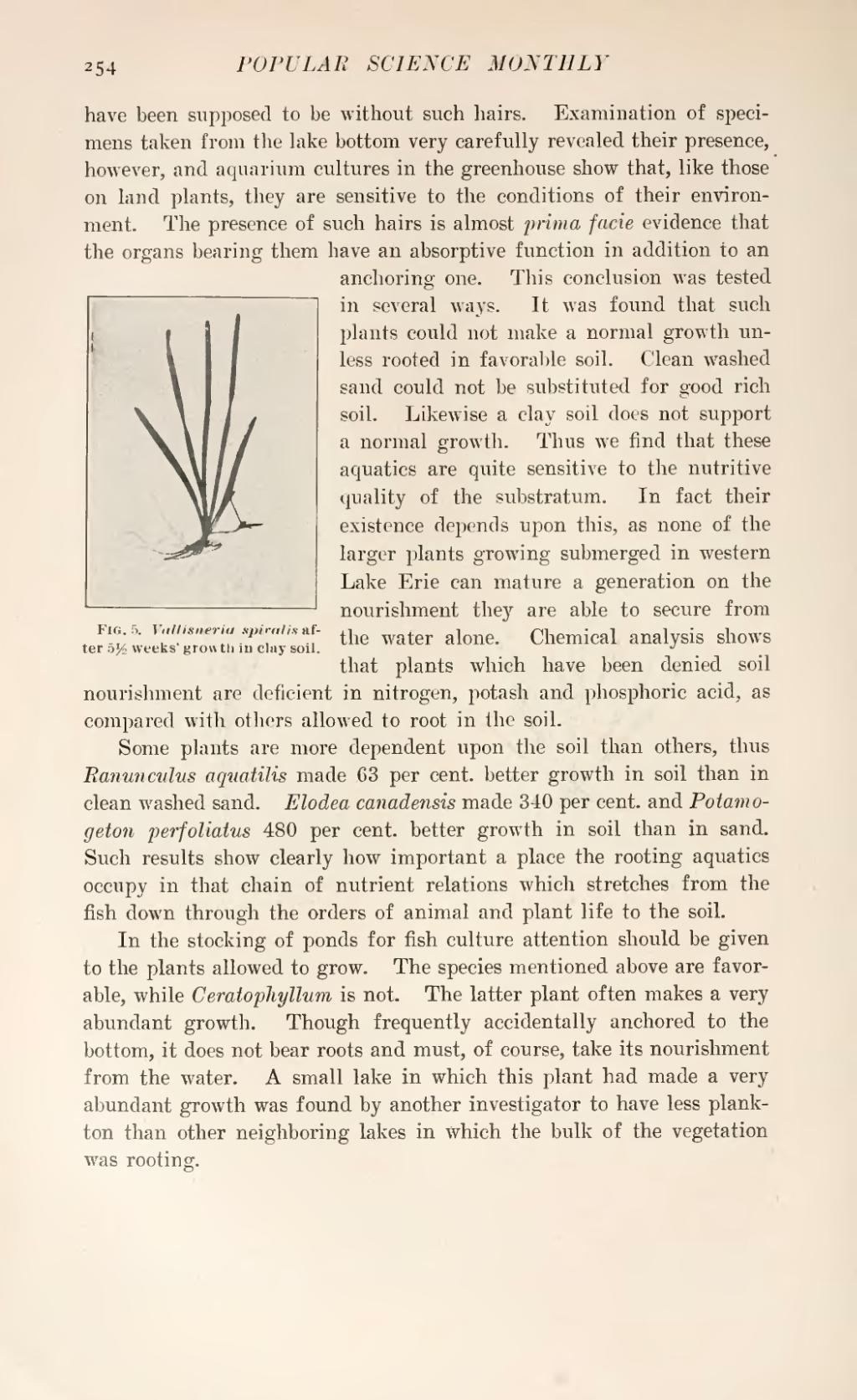have been supposed to be without such hairs. Examination of specimens taken from the lake bottom very carefully revealed their presence, however, and aquarium cultures in the greenhouse show that, like those on land plants, they are sensitive to the conditions of their environment. The presence of such hairs is almost prima facie evidence that the organs bearing them have an absorptive function in addition to an anchoring one.
This conclusion was tested in several ways. It was found that such  Fig. 4. Vallisneria spiralis after 51⁄2 weeks' growth in clay soil. plants could not make a normal growth unless rooted in favorable soil. Clean washed sand could not be substituted for good rich soil. Likewise a clay soil does not support a normal growth. Thus we find that these aquatics are quite sensitive to the nutritive quality of the substratum. In fact their existence depends upon this, as none of the larger plants growing submerged in western Lake Erie can mature a generation on the nourishment they are able to secure from the water alone. Chemical analysis shows that plants which have been denied soil nourishment are deficient in nitrogen, potash and phosphoric acid, as compared with others allowed to root in the soil.
Fig. 4. Vallisneria spiralis after 51⁄2 weeks' growth in clay soil. plants could not make a normal growth unless rooted in favorable soil. Clean washed sand could not be substituted for good rich soil. Likewise a clay soil does not support a normal growth. Thus we find that these aquatics are quite sensitive to the nutritive quality of the substratum. In fact their existence depends upon this, as none of the larger plants growing submerged in western Lake Erie can mature a generation on the nourishment they are able to secure from the water alone. Chemical analysis shows that plants which have been denied soil nourishment are deficient in nitrogen, potash and phosphoric acid, as compared with others allowed to root in the soil.
Some plants are more dependent upon the soil than others, thus Ranunculus aquatilis made 63 per cent. better growth in soil than in clean washed sand. Elodea canadensis made 340 per cent. and Potamogeton perfoliatus 480 per cent. better growth in soil than in sand. Such results show clearly how important a place the rooting aquatics occupy in that chain of nutrient relations which stretches from the fish down through the orders of animal and plant life to the soil.
In the stocking of ponds for fish culture attention should be given to the plants allowed to grow. The species mentioned above are favorable, while Ceratophyllum is not. The latter plant often makes a very abundant growth. Though frequently accidentally anchored to the bottom, it does not bear roots and must, of course, take its nourishment from the water. A small lake in which this plant had made a very abundant growth was found by another investigator to have less plankton than other neighboring lakes in which the bulk of the vegetation was rooting.

